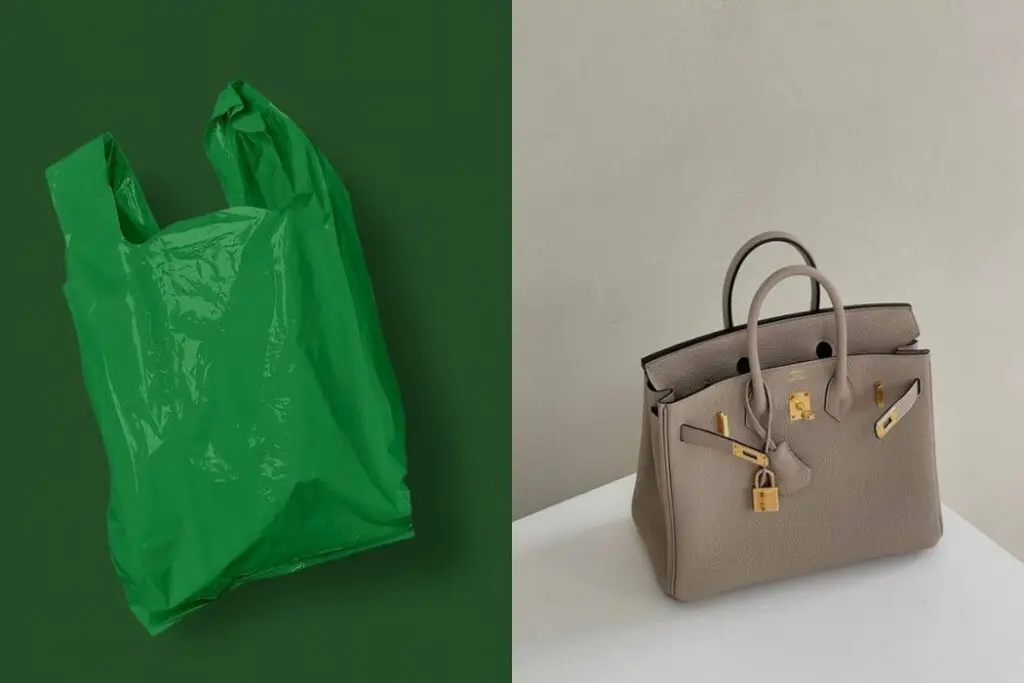Both of these things are called “bags.”
Just like “content,” the word creates a bizarre equivalency. The left is the world of hyper-commoditized single-use trash. The right is something else entirely.
Keep reading…I’ll get back to “content” in a moment.
The annual market for the bags on the left is over $20 billion, but the top individual manufacturers have around $250 million in annual revenue. Unit costs are just a few cents. About 500 billion are used each year worldwide.
The annual market for luxury handbags is about the same size. But a new standard Hermès Birkin bag starts in the low five figures—assuming you can even get one. They only sell them to certain customers based on factors like loyalty and fame. The bags often appreciate in value on the secondary market. Rare and custom versions head towards the seven-figure range. Hermès isn’t telling, but it’s estimated they manufacture a few thousand per year.
Back to what you use to carry around your messaging. Both creators and buyers have a choice.
Creators: You can create disposable commodities. The cutoff point where it takes a human versus a machine to create it is getting higher and higher. Or you can reach for the other end of the spectrum—what only you can produce and only for highly select clients.
Buyers: You can decide that mass-produced commodity content is good enough to hold your messaging. You can hand your messaging off to your potential customers like a bag to carry toilet paper and mayonnaise. Or you can decide that you need a better look to carry your high-value meaningful messaging.
Either way, sure, it’s still “content.” But is it?




